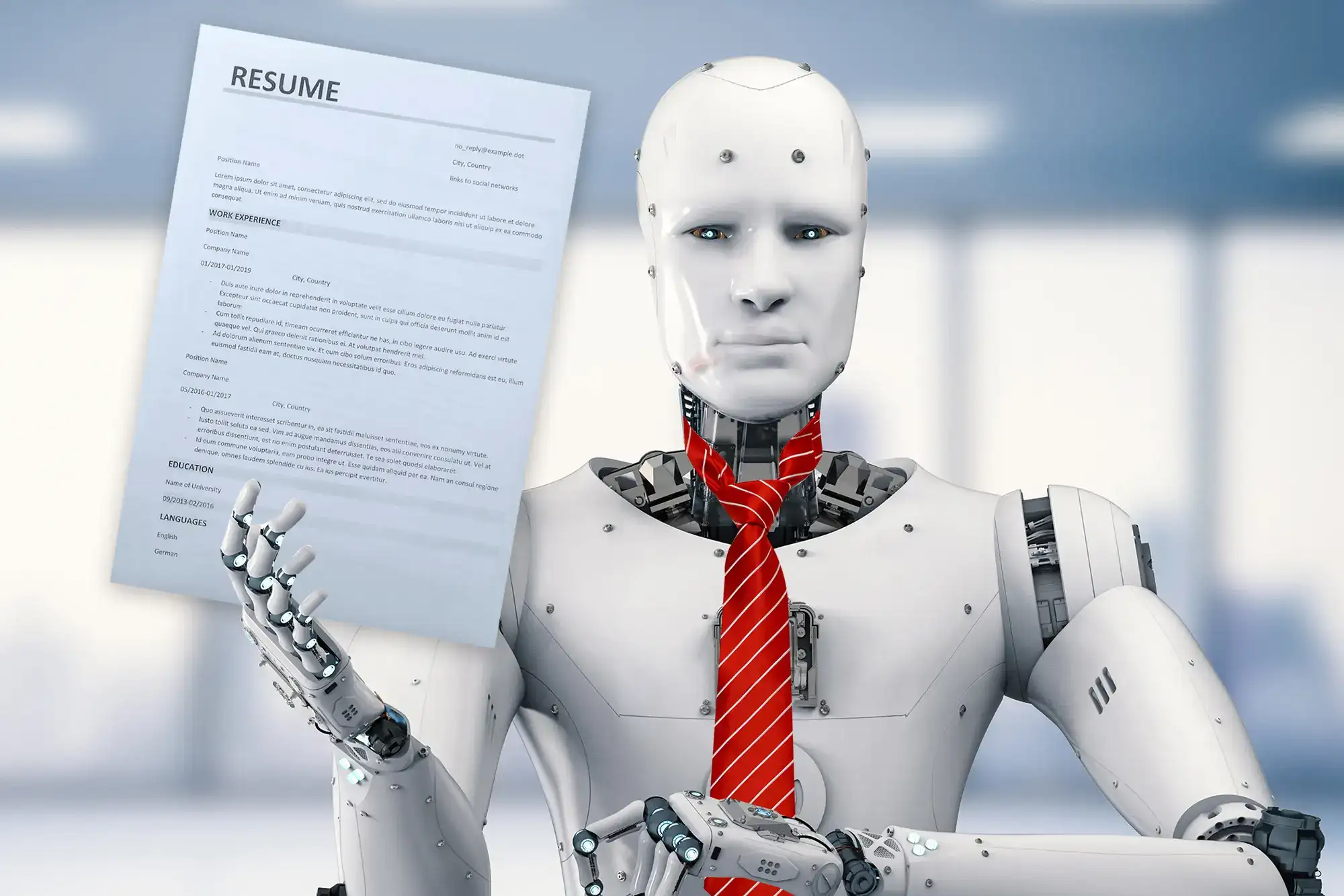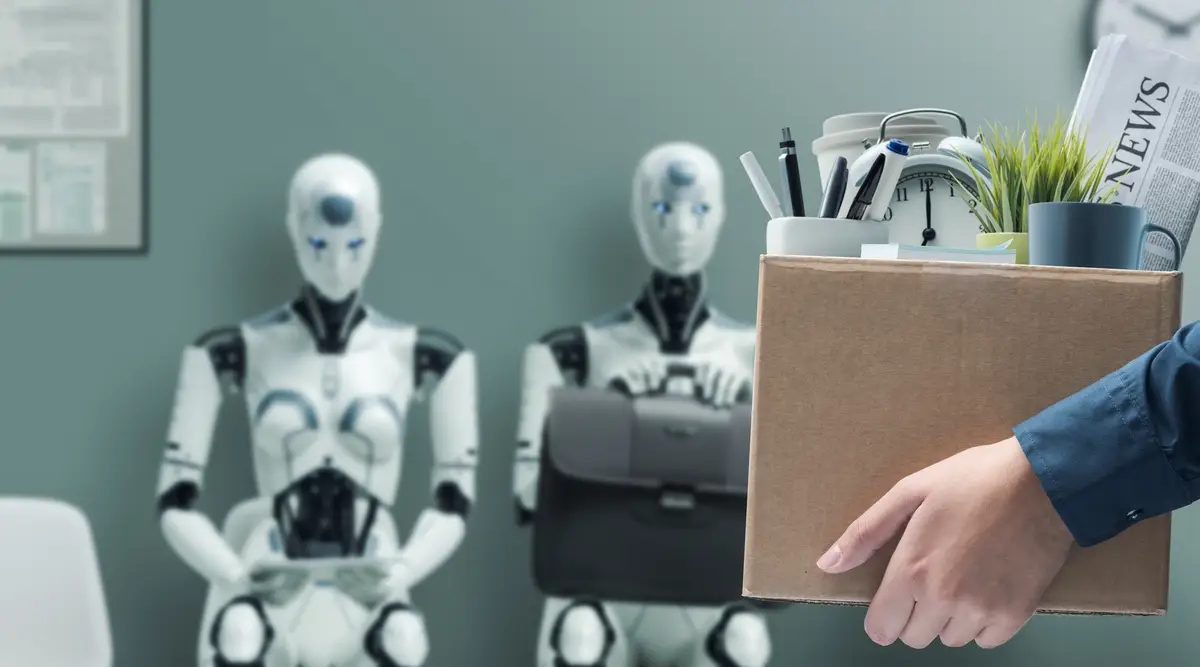Will AI create or destroy jobs in developing countries? It’s the burning question for the future of work in these vibrant economies. The promise of Artificial Intelligence is like a double-edged sword. On one side there’s hope for a revolution in job creation, on the other the fear of massive job displacement. It could spark a job revolution or become a dark cloud over the workforce. As we slice through the hype, let’s dissect the real impact AI may have on employment across the developing world. Will AI be the much-needed catalyst for growth or an unwelcome catalyst for widespread job losses? The answer isn’t simple, and it’s my mission to guide you through the intricate web of possibilities AI weaves in these nations. Join me, and let’s explore the sectors that could thrive or shrink, and the skills that will count in a future where AI stands beside human workers.
The Dual Edge of AI: Job Creation versus Job Displacement
Examining the AI impact on employment in developing nations
Picture a tool so sharp it can carve new paths or cut ties with the old. Artificial intelligence is that tool in the job world, especially in lands that still climb the ladder of wealth. In these places, AI’s impact on employment is a coin with two sides. On one hand, it can throw open the doors to jobs we’ve never seen. On the other, it can steal jobs that folks have done for years.
Ai is everywhere now. It helps farmers grow crops and doctors treat patients. It also changes the work people do. Some fear this. They worry that robots and smart machines will grab jobs from human hands. But, these same tools can also make new jobs for those who learn how to manage them.
The sectors at risk: Where technology-driven job displacement is most likely
So, what places need to watch their step? The first is factories that make things. Here, robots work faster and never get tired. Yes, they build cars and phones quick, but humans must find new roles. Next up is farming. Tractors that think for themselves can plow and harvest without a driver. But farmers then can focus on making their land better rather than driving a tractor.
We can’t forget stores and offices. Here, AI sorts items or answers phone calls. It’s helpful, sure, but some jobs fade away. And let’s talk about doctors and nurses. Machines can now scan for illness and sometimes even suggest cures. Health workers must learn how to use these tools. This way, they can give even better care.
Every job that AI takes can scare us. But it is important to know, AI also creates new chances for work. More schools are needed; ones that teach skills for the AI era. People must know how to talk to machines. They must learn how to fix them when they break down.
The key is balance. We must guide the young to learn about AI and how it changes work. Adults in jobs now must also step up and learn new things. Help from everyone – governments, schools, and companies – is needed. Together, they can make this big change a good one, not something to fear.
In places with less money, this shift is tough. Machines cost a lot, and learning about them is not easy. But these lands can also gain the most. With AI, small farms can feed more mouths. Factories can make more things to sell. The money from this work can build schools and hospitals.
I say this as someone who has seen these changes up close. AI can fill hands with tools for a better tomorrow. But we must steer it true. Our aim should be jobs that last and help folks stand on their own feet. We want work that betters all lives, not just those with robots. AI can be a friend, but only if we’re smart about inviting it in.
Navigating the New Landscape: Workforce Development and Skill Evolution
Reskilling for the AI era: Adapting educational systems in low-income countries
As an expert in AI’s impact on job markets, I see big changes ahead with AI. In low-income countries, the rise of artificial intelligence means we must adapt how we teach our kids and workers. To deal with AI in the workplace, we will need to teach new skills, focusing on what workers in developing nations will need to know to stay ahead.
Automation in low-income countries can replace certain jobs. It can also need new skilled work that only humans can do. This shift means we must look closely at our education to prepare for the future of work with AI. We aim to turn job losses into new chances for those ready to learn the skills needed for these new jobs.
Educational systems in these nations must focus on re-skilling for the AI era. We can’t let technology leave our workers behind. Instead, we create courses and programs that teach the skills needed for the future. We help people learn how to work with AI, not against it.
Fostering digital literacy for an AI-integrated job market
Digital literacy is a must for anyone who hopes to work with modern tech, including AI. In developing nations, we must make sure we raise digital literacy. Knowing how to use digital tools will help people join the AI job market.
But what is digital literacy? It means knowing how to use computers, the internet, and other digital tools. It’s about understanding tech well enough to work with it every day. Without these skills, AI and automation will seem like threats, not helpers.
By teaching digital literacy, we help our people stand strong in a job world filled with AI. We prepare them not just to use tech, but to create it and make it better. In AI’s role in healthcare jobs, for example, doctors and nurses must know how to work with new AI tools that can save lives.
In the agricultural sectors of developing nations, AI can help farmers grow more food with less work. But they need to know how to use the tools that AI brings them. When we talk about AI in manufacturing in developing countries, we mean bots working with people to make better products.
To wrap up, AI is switching up jobs everywhere, especially in developing nations. We face a big task: to teach our people the skills they need for this new world. If we do this right, AI won’t just replace jobs – it will make them better and create even more. And that’s a future I’m excited to help build.
The Growth Paradox: AI’s Role in Economic Expansion and Inequality
Assessing AI’s influence on economic growth in emerging economies
AI is changing how we work and make things. It is also shaping the money we make as nations. In places where money is tight and tech is catching up, AI is a tool for making more goods. It helps folks do less but make more. This means more money for the nation. But not all people see this growth. Some may find their jobs at risk as machines and AI take over tasks they used to do.
AI can jazz up jobs like making clothes or cars. Machines do the same work faster and for less cash. This makes companies in developing nations better able to sell stuff worldwide. So, the economy gets better. But this boom also means some workers need to step up their game. They need to learn new skills to work with AI. This shift in skills is key to keeping jobs and making new ones.
Addressing AI-driven economic disparities through policy and innovation
Now, AI does not play fair all the time. It can make the gap between rich and poor even wider. The reason is simple: AI is best friends with those who know how to use it. If you have skills in AI, you’re in luck. If not, things may get tough. To fix this, we need smart plans and fresh ideas. This means teaching people about AI and helping them get better at using it.
Governments and companies must work together. They need to make sure people can learn about AI no matter where they come from. They can do this by setting up training and classes that are easy to get to. These should focus on skills that will be in demand in the future. Also, they should encourage using AI in ways that help everyone, not just the big shots.
Investing in folks is smart. It means better jobs and more justice in how money and chances are handed around. It also helps create a market where new businesses can grow. These businesses can make use of AI, too. They can think up new things to sell and find better ways to do business.
In the end, AI is a huge chance for growth in developing nations. But it could also leave some behind if we’re not careful. We need plans that help everyone get a piece of the pie. We need to think about how we train folks for these new jobs. How we make these changes will show if AI becomes a friend or foe to people’s daily bread. It’s up to us to steer AI in a way that builds not just wealth, but fairness too.
Building the Future: AI, Entrepreneurship, and Sustainable Jobs
The promise of AI in fostering entrepreneurship and labor market innovation
AI is shaking up how we work, especially in poorer places. It’s not just about robots taking jobs. It’s about starting new kinds of businesses too. Think of it like seeds. AI plants seeds for fresh business ideas. This sparks job revolutions. Now, folks can solve problems in ways they never could before. They use AI to build, grow, and make things better, faster, and cheaper.
In developing nations, young people are full of bright ideas. With AI, they turn these ideas into reality. They create apps that help farmers or doctors. They even make traffic in big cities flow smoother. This drive makes new jobs, not just for coders, but for everyone who keeps these businesses running. More jobs mean less worry about money for many families.
How AI is reshaping healthcare and agricultural sectors with sustainable job opportunities
Let’s zoom in on two big areas: healthcare and farming. AI is a game changer here.
In healthcare, AI helps catch diseases early. It can scan through pics better than some doctors. In turn, this means we need folks who can work with these smart tools. It makes jobs that need special training. It also makes healthcare better for everyone.
Now, let’s check out farming. AI helps farmers know when to plant crops, and when to water them. Thus, crops grow better and there’s more food. This helps farmers earn more. Plus, it creates jobs for people who know how to use these AI tools.
Both farming and healthcare use AI to make jobs that stick around. They are not jobs that vanish like a puff of smoke. The key is to teach people how to work hand-in-hand with AI. Doing so, we build jobs that last and make lives better. When people learn more, they can do more. Better trained workers can solve bigger problems.
In the end, AI gets people thinking. It gets them learning. And most of all, it gets them working in ways that help us all. AI seeds are sprouting everywhere. New jobs are blooming – jobs we couldn’t even dream of before. And that’s how AI can spark a job revolution in developing nations.
In this post, we tackled the sharp effects of AI on jobs around the globe. We saw how AI sparks new jobs but also erases others, especially in growing nations. We peered into which jobs might fade as tech moves forward. We also discussed how to prep the workforce for an AI-filled future by boosting skills and education, emphasizing the need for digital know-how. Then, we weighed AI’s mixed bag of roles in economic growth, eyeing both the chance for wealth and the risk of wider money gaps. Finally, we explored how AI could light the way for new business and sustain jobs in health and farming.
The key is balance. It’s about merging AI’s power with smart learning and fair rules to make sure progress benefits all. By pushing digital smarts and carving paths for fresh entrepreneurs, we can steer the AI revolution towards a future where work thrives and society wins. This isn’t just about tech; it’s about shaping a world where everyone has a shot at success. Let’s lead the charge and build this future together.
Q&A :
Will AI impact employment trends in developing countries?
Artificial intelligence (AI) is expected to significantly impact employment trends in developing countries. While AI has the potential to automate repetitive tasks, increase productivity, and create new jobs in technology sectors, it may also lead to job displacement in industries that are susceptible to automation. The overall effect on employment will depend on various factors, such as a country’s economic structure, investment in education, and policies adopted to mitigate the impact on the workforce.
What are the potential benefits of AI on job creation in developing countries?
AI can potentially lead to job creation in developing countries by driving innovation and creating demand for new skill sets. Industries such as AI development, data analysis, and robotics will require more skilled workers. Additionally, AI can improve the efficiency of various sectors, such as agriculture and healthcare, leading to expansion and more employment opportunities. Investment in AI can also stimulate economic growth, which indirectly supports job creation across different sectors.
Could AI exacerbate the skills gap in developing countries?
There is a legitimate concern that AI could widen the skills gap in developing countries. As AI and automation technologies advance, the demand for high-skill jobs could increase, while low-skill jobs are more likely to be automated. This could create a scenario where there is a shortage of qualified individuals for the high-skill positions, and an oversupply of workers for roles that no longer exist. Education systems and training programs will be critical in addressing this gap and preparing the workforce for the emerging job market.
How can developing countries prepare for the potential job disruption caused by AI?
Developing countries can prepare for potential job disruptions by investing in education and training programs that focus on digital skills and AI literacy. Governments and private sectors can collaborate to forecast future job market trends and create curricula that align with the anticipated needs. Moreover, upskilling and reskilling existing workers can help mitigate the impact of job displacement. Policies that encourage innovation and support the growth of new industries can also be instrumental in job creation.
What role do governments have in managing the transition to an AI-driven economy in developing countries?
Governments have a critical role in managing the transition to an AI-driven economy in developing countries. They must develop comprehensive strategies that include updating education systems, fostering innovation, and investing in infrastructures, such as high-speed internet, that are necessary for AI technologies. Governments can also implement social protection programs, like unemployment benefits and retraining initiatives, to support workers who are affected by automation. Proactive policy-making and international cooperation can help harness the benefits of AI while minimizing its negative impacts on the job market.






